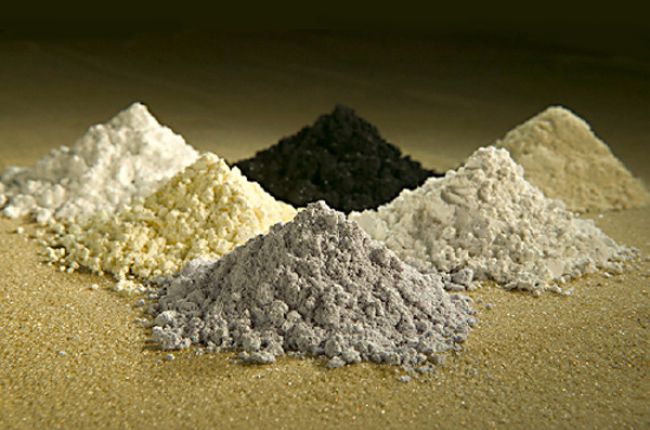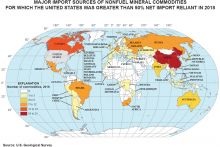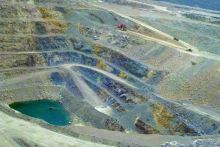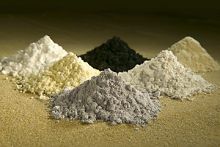
U.S. Geological Survey news release, "Critical Minerals of the United States":
"Mineral commodities that have important uses and no viable substitutes, yet face potential disruption in supply, are defined as critical to the Nation’s economic and national security. A mineral commodity’s importance and the nature of its supply chain can change with time, such that a mineral commodity that may have been considered critical 25 years ago may not be critical now, and one considered critical now may not be so in the future.
A good example of this is aluminum. Aluminum has always been one of the most common elements in the Earth’s crust, but it has not always been so easily obtained. In fact, the ceilings of the Library of Congress and the crown of the Washington Monument were once covered in aluminum as a symbol of status, because aluminum was worth more than silver. However, once scientists figured out how to extract aluminum from bauxite ore, aluminum suddenly became much easier to produce, and its value plummeted in turn."
Learn More:
- Critical Mineral Resources of the United States - Economic and Environmental Geology and Prospects for Future Supply (Report), U.S. Geological Survey
2017 report providing detailed information on 23 mineral commodities deemed critical to the United States.
- Tracking the Global Supply of Critical Materials (Webinar), American Geosciences Institute
2018 webinar detailing efforts from the U.S. and European Union to monitor the global production, trade, and usage of critical raw materials; identify and quantify vulnerabilities in supply; and support co-operation on production, recycling, and substitution of key mineral resources.
- Underpinning Innovation: The Science and Supply of America's Critical Minerals and Materials (Webinar), American Geosciences Institute
2016 webinar focusing on efforts on the federal level to ensure a steady supply of critical minerals and materials.
- Minerals, Critical Minerals, and the U.S. Economy (Report), National Research Council
2008 report that provides background on what defines a "critical" mineral and proposes a strategy for defining and tracking critical minerals at the federal level.
- Critical Materials Strategy (Report), U.S. Department of Energy
2011 report that details criticality assessments, supply challenges for critical minerals and materials, and efforts to reduce risk and ensure supply of these commodities.
- Critical Materials Institute (Website), U.S. Department of Energy
Website of the Critical Materials Institute (CMI), an energy innovation hub operated by the Ames Laboratory for the U.S. Department of Energy. The CMI brings together people from government, academia, and industry, to develop new technologies that make better use of critical minerals or use alternative resources to decrease supply risk.



